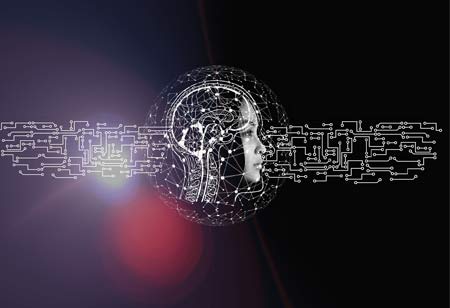THANK YOU FOR SUBSCRIBING
Be first to read the latest tech news, Industry Leader's Insights, and CIO interviews of medium and large enterprises exclusively from Education Technology Insights
Digital Assessment in the Classroom is Here to Stay
The first towards rethinking the function of evaluations is digital assessment in education.

By
Education Technology Insights | Monday, April 03, 2023
Stay ahead of the industry with exclusive feature stories on the top companies, expert insights and the latest news delivered straight to your inbox. Subscribe today.
Digital assessment in education provides a range of benefits that make it a valuable tool for teachers and students alike. As technology continues to advance, digital assessments will likely become even more sophisticated and widely used in education.
FREMONT, CA: The first towards rethinking the function of evaluations is digital assessment in education. Modern platforms allow teachers to focus on providing creative learning possibilities by reducing the time spent on the manual task of holding in-person assessments. Digital evaluation can provide data-based insights to teachers and learners on progress, gaps, and target areas of improvement to help them achieve the best learning outcomes.
Digital assessments can be administered quickly and easily, reducing the amount of time and resources required for grading and feedback. With the use of automated grading systems, teachers can focus on providing targeted feedback and supporting student learning, rather than spending hours grading papers.
Digital assessments can be accessed from anywhere, making them convenient for both teachers and students. This is particularly important in light of the COVID-19 pandemic, which has forced many schools to adopt remote learning models.
Digital Evaluation
Encouraged by the intensive digitalisation of the education sector, especially in recent years due to the pandemic, educational institutions need to rethink how they assessed students. The majority of universities and education institutions swiftly moved their physical assessments to digital, thanks to the digital tools and services available.
As a part of the transition to a digital assessment system, institutions had to consider evaluation with diligence and security against what was attainable and equitable. Universities that already had long-term digital assessment strategies were able to accelerate their digital assessment voyage due to the rapid expansion of scaled-up technology platforms.
Assessment Rethink
The first step in a new strategy to rethink the function of evaluation is digitising assessments. Many institutions began permanently digitising student assessments as the first step toward making long-term strategic decisions and changes.
Due to the flexible alternatives offered by digital assessments, educational institutions can now spend less time preparing for, observing, and monitoring traditional in-person exams. By freeing up time spent on manual duties, many new platforms enable teachers and professors to focus on the difficulties of analysing open-ended responses and creating distinctive and creative learning possibilities and solutions.
The Benefits
Assessments play a vital role in education, enabling improvement, shaping behaviour, and demonstrating accountability. Adopting a digital approach to assessments better aligns with how most students complete their work and offers a seamless and boundaryless assessment experience. Digital assessment solutions accompany advanced security measures, including authentication and encryption mechanisms, to prevent security breaches and ensure that only authorised users can access data and content.
The approach to education is changing as more emphasis is placed on fostering self-directed learning skills in students. Traditional scheduled exams are being replaced with ongoing and personalised evaluations made possible by digital assessment tools. This shift in evaluation methods also allows for the use of analytics, which enables both students and professors to analyse data and access various tools to enhance their research and improve the management of the teaching and evaluation process.
Digital assessments provide flexible alternatives for educational institutions, allowing them to spend less time preparing for, observing, and monitoring traditional in-person exams.
Looking Ahead
The move towards digital assessment and the broader digitalisation of higher education services has led to a growing need for authentic and trustworthy evaluation procedures. Therefore, it is crucial to ensure that digital assessment techniques offer a reliable and suitable substitute for standardised testing while assessing and developing the necessary skills for students' future careers.
The increasing need for precise evaluation will enable universities to progress to the subsequent phase of digital transformation. Initially, digital transformation was a pragmatic concern for many educational institutions, but it rapidly expanded and became all-encompassing, fundamentally transforming the assessment of students and ensuring that it reflects skills relevant to the real world.
Additionally, an assessment platform must be inclusive of everyone. The capacity to cater to the diverse requirements of students with varying abilities will distinguish good assessments from inadequate ones.
One more essential aspect of digital assessment is the information and analyses it can furnish to educators and students. By giving targeted feedback to instructors and learners on advancement, deficiencies, and areas for improvement, digital assessment can aid them in staying focused on attaining optimal learning outcomes.
Although in-person exams may persist, they are improbable to remain the predominant form of assessment. In the era of digital technology, educational institutions must employ digitised learning tools and platforms to stay competitive, enhance the quality and flexibility of the assessment process, and establish sustainable, impartial, and equitable educational solutions.
Digital assessment in education is becoming increasingly prevalent and necessary due to the benefits it provides for educational institutions and students alike. It offers flexibility, accuracy, inclusivity, and valuable data and insights, which traditional in-person exams cannot provide. Additionally, the ongoing digital transformation of higher education services necessitates the use of digital assessment tools and platforms to remain competitive and provide the best possible educational solutions. Therefore, it is safe to say that digital assessment in education is here to stay and will continue to evolve and improve in the years to come.







